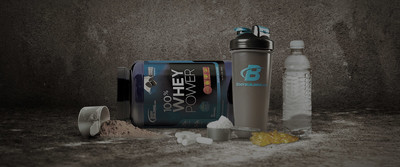When you're in a rush, one option that you may decide to turn to is a protein bar. Or in some cases, you may just find that there is one particular protein bar that you find absolutely delicious (many, in fact, could easily be mistaken for a full-fat chocolate bar) and want to include it in your diet on a regular basis.
Whatever your reason for choosing a protein bar is, it's important that you're making the decision of which one to choose wisely.
Not all protein bars are made the same way and while some will help you reach your muscle building and fat loss goals, an equal number will detour you down the other pathway.
By understanding the six key factors you should be looking for in a protein bar, you will help make the best decision possible.
Here's what you need to know.
1. Total Calorie Count
The first factor to think about is the total calorie count. If you're on a fat loss diet, downing a 400 calorie protein bar isn't exactly going to make fat loss easy.
If you only have a total of 1200 calories that day to take in, that's a third wasted on this snack!
You'd be far better off filling those 400 calories with 6 ounces of fish, half a cup of rice, and 2 cups of steamed vegetables.
On the flip side, if your goal is to build lean muscle mass and you're struggling each day to get enough calories in, a 400 calorie protein bar may seem like a heaven-sent.
It's important that you always look at the calorie level of the protein bar you're choosing because they can be highly variable.
You can clearly see from this illustration that mistaking one for the other could very rapidly cancel out any fat loss progress for the day or provide very little benefit for muscle building.
2. Total Number Of Carbohydrates
Second, also be sure you take a peek at the carbohydrate content of the bar. This can be extremely variable as well, especially with all the lower carb products coming out on the market.
For someone who is looking to lose fat, you probably don't want to go much over about 30 grams of carbs per bar, and this could even be too high depending on your overall diet protocol.
If you're using the bar immediately after a workout, then you can afford more carbohydrates since the main objective at this time is to have a high carbohydrate intake.
When this is the case though and the protein bar is your post-workout meal, then you'll also want to try and choose a bar that's as low in fat as possible, since fat should be avoided during this time period.
3. Presence Of Sugar Alcohols
When you're choosing a protein bar that is quite low in total carb count, then the next thing you need to be sure you look for is the presence of sugar alcohols. While many people will have no problem tolerating these, for others major issues can arise.
Some of the things that can occur include bloating, diarrhea, cramps, and bad gas. You will have to try them out for yourself to see if you react this way, but if you don't these can be a very helpful fat loss aid.
4. Ingredient Panel Listings
After checking out the calorie and carb counts, then look down and glance through the ingredient listings. The big thing to watch for here is the form of carbohydrates contained in the protein bar. Ideally you want to avoid high amounts of high-fructose corn syrup.
Many bars will have some HFCS in them, but if it's lower on the list this will be a better choice than a bar that has it listed as the second or third ingredient (if it's the first ingredient, you best put that one back).

"Ideally you want to avoid high amounts of high-fructose corn syrup."
5. Dietary Fat Content
Next, also be sure you check out the fat content to be sure on that too. Unless you are using the protein bar post-workout as mentioned above, it's a good idea to find a bar that does contain some fat since this will slow down the release of the carbs into the blood stream and make it more balanced overall.
Just watch the level of saturated or tans fat, aiming to keep those as low as possible. If you can find a good bar with a healthy amount of dietary fat this will make for a far better addition to your diet plan and will definitely be a smarter choice than one of the commercial granola bars that are on the market that can contain trans fats.
6. Carbs To Protein Ratio
Finally, the last thing you'll want to check out is the carbs to protein ratio of the protein bar. This is important because you want be sure the protein content is high enough when compared to the carbohydrates.
If it has a very poor protein to carb ratio (meaning there are far more carbs than protein), you aren't really doing much better than those cereal bars you find in the supermarket.
The protein content is what makes a protein bar a protein bar, so it's something you shouldn't go without.
The best scenario for fat loss will be a 2:1 ratio of protein to carbs, but in some cases a 1:1 ratio would be fine too. Then if you're looking to build muscle or use the bar after a workout, you'll want to get closer to a 1:2 ratio.
Conclusion
Protein bars are quick, convenient, and relatively well priced compared to some of the other options you have available.
When chosen correctly they will be far better than any snack you pick up at the local convenience store or fast food restaurant, so having a couple bars that you really enjoy on hand at all times is a great guard against those times when you're without a meal.

